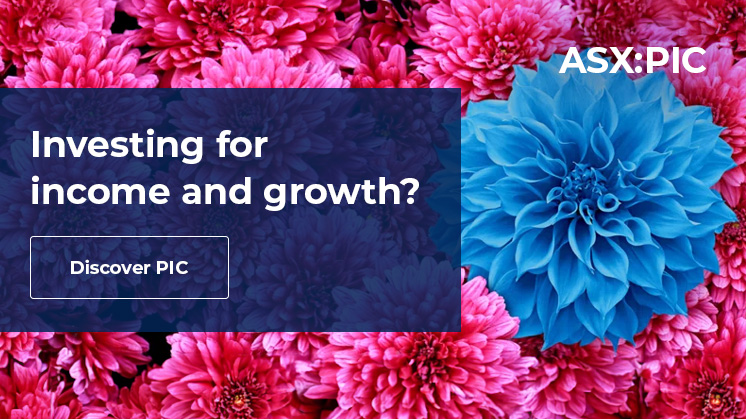
As rates fall, income without excessive risk is getting harder to find. Equities-focused Listed Investment Companies could fill that gap. Sean Roger explains
- Listed investment companies can pay fully franked dividends
- Income opportunities are narrowing as rates fall
- Find out about Perpetual Equity Investment Company (ASX:PIC)
- Browse all Perpetual’s Australian share funds
Listed investment companies (LICs) are emerging as an important option for income-focused investors as traditional avenues for generating yield come under pressure, says Perpetual’s Sean Roger.
Income investors have been spoiled for choice in recent years, with elevated term deposit rates, traditional dividend stocks and bank hybrid securities all delivering yield without excessive risk.
But as interest rates decline and equity markets continue to rally, savings accounts are becoming less attractive, and dividend yields are compressing.
Meanwhile the staged closure of the bank hybrid market is removing another important source of income.
“Investors used to be able to get attractive yields at reasonable valuations. But the market has risen to a point where investors are having to take significant capital risk,” says Roger.
LICs offering strong, fully franked yields look increasingly attractive as a result, he says.
“Wesfarmers has recently traded at a 2.5 per cent dividend yield, similar to CBA, whereas they used to be in the 4-5 per cent range. Telstra’s yield has come down below 4 per cent.
“There was a point where you could get 4 per cent-plus term deposit rates.
“The pace that interest rates come down is still up for debate. But the general direction, both here and in the US, is that we will continue to get rate reduction which ultimately will flow through to lower term deposit rates.
“Meanwhile, just over $40 billion of hybrid capital in the market today is being phased out.
"Hybrids are a very popular place for retail and institutional capital to get an attractive yield. That capital is going to be looking for alternate places to go for that relatively defensive yield.”
LIC advantages
Unlike unit trusts, which must distribute all income each year, LICs are structured as corporations which allows them to retain earnings and smooth dividend payments over time.
“The company structure allows flexibility around distribution pay-out ratios, which enables LIC boards to manage distributions in a way that can be a lot more consistent than unit trusts, which are mechanically forced to pay out a certain amount of money depending on profit realised,” he says.
LICs can also attach franking credits to distributions because they pay tax on profits at the company level.
“The company structure means the income component of the return for investors can be done in a very tax-efficient way for investors,” says Roger.
Franking credits can be particularly valuable for investors in low-tax environments such as self-managed superannuation funds. For some, it can even result in tax refunds on top of dividend income.
Finding value in an expensive market
Despite elevated market valuations, LICs with a disciplined value lens can still find high-quality companies trading at attractive prices, Roger says.
“Through having a value and quality lens, we’re able to still find opportunities in the market where we can get access to high-quality companies that may have short-term headwinds."
That discipline allows portfolios to maintain yield without chasing overstretched names, and to position for recovery in undervalued sectors.
Discounts to NTA
Many LICs are also trading below their net tangible asset (NTA) value – offering investors the chance to access underlying portfolios at a discount.
Roger notes that sector-wide discounts have widened in recent years, partly because high interest rates made alternatives such as term deposits and hybrids more attractive.
As those options fade, the relative appeal of consistent, fully franked dividends may rise. That means there is potential for discounts to narrow.
About Sean Roger and Perpetual Equity Investment Company (ASX:PIC)
Sean is co-portfolio manager for Perpetual Equity Investment Company (ASX:PIC) as well as Perpetual SHARE-PLUS Long-Short Fund and Perpetual Pure Equity Alpha Fund.
Perpetual is a pioneer in Australian quality and value investing, with a heritage dating back to 1886.
We have a track record of contributing value through “active ownership” and deep research.
Browse Perpetual’s Australian equities capabilities
Want to know more? Contact a Perpetual account manager


